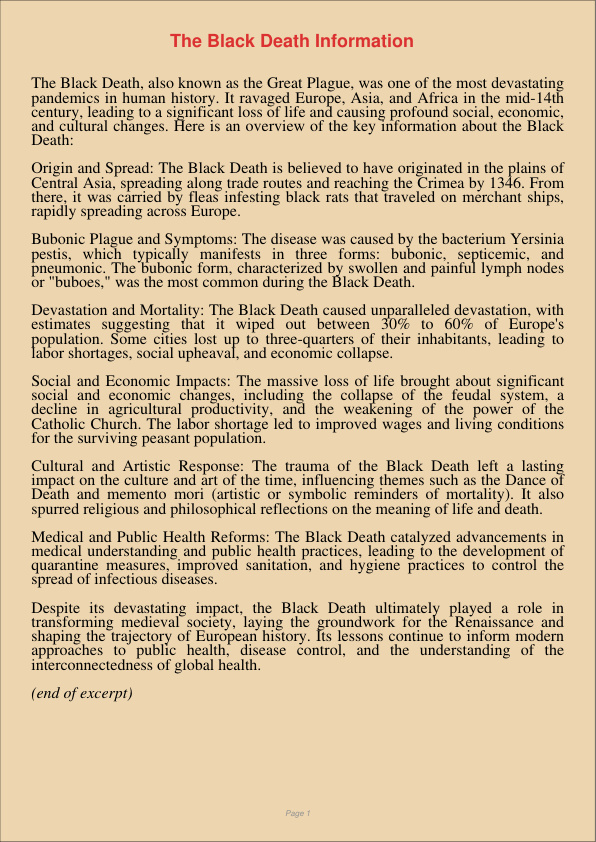The Black Death Information
Dec 31, 2023
black death information
Education
Biology
The Black Death, also known as the Great Plague, was one of the most devastating pandemics in human history. It ravaged Europe, Asia, and Africa in the mid-14th century, leading to a significant loss of life and causing profound social, economic, and cultural changes. Here is an overview of the key information about the Black Death:
Origin and Spread: The Black Death is believed to have originated in the plains of Central Asia, spreading along trade routes and reaching the Crimea by 1346. From there, it was carried by fleas infesting black rats that traveled on merchant ships, rapidly spreading across Europe.
Bubonic Plague and Symptoms: The disease was caused by the bacterium Yersinia pestis, which typically manifests in three forms: bubonic, septicemic, and pneumonic. The bubonic form, characterized by swollen and painful lymph nodes or “buboes,” was the most common during the Black Death.
Devastation and Mortality: The Black Death caused unparalleled devastation, with estimates suggesting that it wiped out between 30% to 60% of Europe’s population. Some cities lost up to three-quarters of their inhabitants, leading to labor shortages, social upheaval, and economic collapse.
Social and Economic Impacts: The massive loss of life brought about significant social and economic changes, including the collapse of the feudal system, a decline in agricultural productivity, and the weakening of the power of the Catholic Church. The labor shortage led to improved wages and living conditions for the surviving peasant population.
Cultural and Artistic Response: The trauma of the Black Death left a lasting impact on the culture and art of the time, influencing themes such as the Dance of Death and memento mori (artistic or symbolic reminders of mortality). It also spurred religious and philosophical reflections on the meaning of life and death.
Medical and Public Health Reforms: The Black Death catalyzed advancements in medical understanding and public health practices, leading to the development of quarantine measures, improved sanitation, and hygiene practices to control the spread of infectious diseases.
Despite its devastating impact, the Black Death ultimately played a role in transforming medieval society, laying the groundwork for the Renaissance and shaping the trajectory of European history. Its lessons continue to inform modern approaches to public health, disease control, and the understanding of the interconnectedness of global health.
